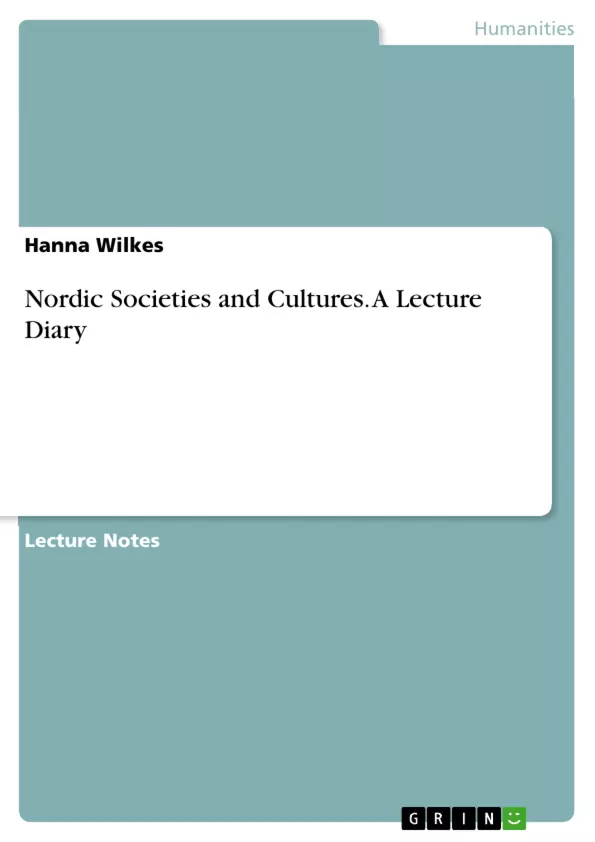This is a lecture diary on a course taken at Helsinki University in 2010. Contentwise it discusses lectures attended on nordic co-operation and identity, the nordic welfare state model, nordic cultural identity, nordic housing, alcohol in nordic societies, democracy, sin and immigration.
Inhaltsverzeichnis (Table of Contents)
- I – 14.9.2010: Nordic co-operation and Nordic identity
- II - 16.9.2010: The Nordic Welfare State model.
- III - 21.9.2010: Nordic cultural identity.
- IV-23.9.2010: Nordic housing - building modernity..
- V-28.9.2010: Alcohol in Nordic societies.
- VI 7.10.2010: Nordic democracy.
- VII- 12.10.2010: Scandinavian sin
- VIII-14.10.2010: Voices of immigration.......
Zielsetzung und Themenschwerpunkte (Objectives and Key Themes)
This text explores the history, development, and characteristics of Nordic societies, focusing on their unique social, cultural, and political aspects. It aims to provide insights into the complexities of Nordic identity, welfare systems, and societal values.
- Nordic co-operation and identity
- The Nordic Welfare State model
- Nordic cultural identity
- Alcohol consumption in Nordic societies
- Immigration and its impact on Nordic societies
Zusammenfassung der Kapitel (Chapter Summaries)
Chapter I: Nordic co-operation and Nordic identity
This chapter explores the historical origins of the idea of a Scandinavian nation, tracing its roots back to the 19th century. It examines the motivations behind the pan-national movement, including the desire for greater political and military power, the formation of a common cultural heritage, and the fostering of peaceful relations between former enemies. The chapter also discusses the challenges that ultimately prevented the realization of this unified Scandinavian state.
Chapter II: The Nordic Welfare State model
This chapter examines the unique welfare systems of the Scandinavian countries, highlighting their exceptional generosity and comprehensiveness. It compares the Nordic model to other welfare systems, such as the liberal and continental models, and explores the key features of the social democratic model that characterize the Nordic approach. The chapter also discusses the role of the state in providing universal benefits, the importance of gender equality, and the challenges facing the Nordic welfare system in the contemporary world.
Chapter III: Nordic cultural identity
This chapter delves into the diverse cultural identities of the Nordic countries, exploring the unique traditions, values, and artistic expressions that define them. It examines the role of history, language, and shared experiences in shaping Nordic cultural identity and explores how these factors contribute to a sense of regional unity and national pride.
Schlüsselwörter (Keywords)
The text focuses on key concepts such as Nordic co-operation, Nordic identity, the Nordic Welfare State model, social democracy, cultural identity, immigration, and alcohol consumption in Nordic societies.
- Quote paper
- Hanna Wilkes (Author), 2010, Nordic Societies and Cultures. A Lecture Diary, Munich, GRIN Verlag, https://www.grin.com/document/316590



